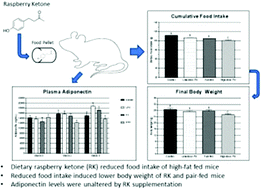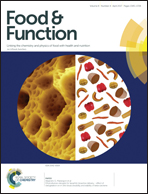Raspberry ketone fails to reduce adiposity beyond decreasing food intake in C57BL/6 mice fed a high-fat diet
Abstract
As the incidence of obesity continues to increase, identifying novel nutritional therapies to enhance weight loss are needed. Raspberry ketone (RK; 4-(4-hydroxyphenyl) butan-2-one) is a bioactive phytochemical that is marketed as a weight loss supplement in the United States, yet there is scant scientific evidence demonstrating that RK promotes weight loss. The aim of the current study was to investigate the effect of RK on accumulation of adipose mass, hepatic lipid storage, and levels of plasma adiponectin in mice fed a high-fat (HF) diet. Mice were individually housed and fed a HF control diet (45% kcal from fat) for two weeks to induce weight gain, then assigned to HF control, high-dose (1.74% wt/wt) raspberry ketone (HRK), low-dose (0.25% wt/wt) raspberry ketone (LRK), or a pair-fed group (PF) fed similar food intake to LRK mice. Following five weeks of feeding, mice fed LRK and HRK diets showed reduced food intake and body weight compared to mice maintained on control diet. When normalized to body weight, mice fed HRK diet exhibited decreased inguinal fat mass and increased liver mass compared to the control group. Hepatic steatosis was lowest in mice fed HRK diet, whereas LRK diet did not have an effect when compared to the PF group. Plasma adiponectin concentration was unaffected by RK and pair-feeding. Our findings demonstrate that RK supplementation has limited benefit to adipose loss beyond reducing energy intake in mice fed a high-fat diet. The present study supports the need for appropriate study design when validating weight-loss supplements.



 Please wait while we load your content...
Please wait while we load your content...